How Many Teeth Does an Adult Have? A Guide to Understanding Your Teeth
Your teeth are more than just part of your smile – they’re essential tools for eating, digesting, and even speaking. As adults, we have a set number of teeth, each with a specific function. Here’s a closer look at how many teeth adults typically have and the role each type plays in our daily lives.
The Adult Teeth Count
Most adults have 32 permanent teeth. Excluding wisdom teeth, adults have 28 teeth.
This includes four different types of teeth, each with a unique function in breaking down food:
- Incisors (8 total) – Four on the top and four on the bottom, these are the flat, sharp teeth at the front of your mouth. They’re responsible for cutting into food as you bite.
- Canines (4 total) – Also called “eye teeth,” there are two on the top and two on the bottom. These pointed teeth help tear and grip food.
- Premolars (8 total) – Located between your canines and molars, with four on the top and four on the bottom. They have a broader surface to help tear and crush food.
- Molars (12 total) – These large, flat teeth in the back of your mouth do the heavy lifting in chewing. They grind and break down food for easy swallowing.

The Anatomy of a Tooth
Each tooth has layers that give it structure and strength. The outer layer, called enamel, is the hardest substance in the human body, protecting the softer, sensitive parts underneath. Beneath the enamel is dentin, a layer that supports the enamel and makes up most of the tooth’s structure. The innermost part, the pulp, contains nerves and blood vessels that help keep the tooth alive.
Variations in Tooth Count
Though 32 is the standard count, some people are born with extra teeth, a condition known as hyperdontia, or with fewer teeth, known as hypodontia. Additionally, many adults have their wisdom teeth (third molars) removed due to crowding or alignment issues, leaving them with 28 teeth instead.
The Role of Teeth in Digestion
Your teeth play a big role in the digestive process. They start by cutting, tearing, and grinding food into smaller pieces, making it easier for your stomach and intestines to break down and absorb nutrients. Without a full set of healthy teeth, it can be challenging to chew food properly, which can impact digestion.
The Evolution of Human Dentition: How Our Teeth and Jaws Have Changed Over Time
The dentition of modern humans has evolved significantly, with a trend towards smaller jaws and teeth. According to Ungar’s book, Evolution’s Bite, From 35,000 to 10,000 years ago, tooth size decreased by about 1% every 2,000 years, accelerating to 1% every 1,000 years due to evolutionary, environmental, and cultural influences. Shifts in diet, such as the increase in meat consumption and food processing through cooking and tools, reduced the need for large teeth. Pottery and softer foods further diminished the role of robust dentition, allowing humans to survive without full sets of teeth.
From 35,000 to 10,000 years ago, tooth size reduced by 1% every 2,000 years, accelerating to 1% every 1,000 years since.
Human intelligence and technological advancements, such as dentures and orthodontics, also mitigated the selective pressures for large teeth. Evolutionary changes, like encephalization and bipedalism, required a larger braincase and shorter jaw, which crowded back molars and led to issues like impacted wisdom teeth. Speech evolution influenced jaw and dentition structures, and modern dental technology continues to impact dentition evolution by addressing these anatomical changes. Overall, human ingenuity has played a unique role in adapting and altering dentition beyond natural selection.
Understanding the Structure and Function of Human Teeth: From Incisors to Molars
Enamel, covering the visible tooth crown, is the hardest substance in the human body due to its high mineral content, providing fracture resistance for chewing.
The primary function of teeth is mastication, involving cutting, mixing, and grinding food to create a bolus for swallowing.
Teeth are arranged in a U-shaped formation, with the upper maxillary arch and lower mandibular arch supporting specific functions.
- Incisors: Located at the front, these teeth cut food without grinding, with eight incisors in total (two central and two lateral on each arch), exerting up to 43.3 kg (95.5 lbs) of force.
- Canines: Positioned next to the incisors, canines help control jaw dynamics and tear food; they have the longest root and are highly stable.
- Premolars (Bicuspids): Located behind canines, there are eight in total, aiding in crushing and grinding food with a biting force of up to 99.11 kg (218.5 lbs).
- Molars: The strongest teeth at the back, with eight primary molars used for grinding; first molars have a biting force of up to 120.66 kg (266 lbs).
- Wisdom teeth (third molars) are often removed as they rarely contribute to chewing.
In conclusion, adult teeth play essential roles in our daily lives, from aiding in digestion to supporting speech and maintaining facial structure. While most adults have 32 teeth, each type—incisors, canines, premolars, and molars—contributes uniquely to cutting, tearing, and grinding food. Advances in human technology and changes in diet have influenced the evolution of our teeth, resulting in smaller jaws and a reduced need for large, robust dentition.
Modern dental care and technology continue to enhance our ability to maintain healthy teeth, allowing us to overcome natural limitations and enjoy better oral health. With proper care, our teeth can serve us well, supporting both our health and quality of life
Frequently asked questions about teeth
How many teeth do adults have?
Most adults have 32 teeth, including wisdom teeth. Without wisdom teeth, the total count is typically 28.
What are the different types of teeth in adults?
Adults have four types of teeth: incisors for cutting, canines for tearing, premolars for crushing, and molars for grinding.
Why are wisdom teeth often removed?
Wisdom teeth, or third molars, are often removed because they can become impacted, cause crowding, or lead to alignment issues in the jaw.
What is the hardest part of a tooth?
Enamel is the hardest substance in the human body, covering the visible part of the tooth and providing protection.
Why do humans have different types of teeth?
Each type of tooth has a specific role in eating and digestion, helping to break down food into smaller, manageable pieces.
How has human evolution affected our teeth?
Over time, human jaws and teeth have become smaller due to changes in diet and food preparation techniques, like cooking and grinding.
What is the role of teeth in digestion?
Teeth cut, tear, and grind food, making it easier to swallow and digest, which helps the body absorb nutrients effectively.
Can adults have more or fewer than 32 teeth?
Yes, some adults have extra teeth (hyperdontia), fewer teeth (hypodontia), or have their wisdom teeth removed, resulting in fewer than 32.
How does dental technology affect our teeth today?
Technologies like dentures, orthodontics, and dental implants help correct dental issues, reducing the evolutionary pressure to maintain a large set of teeth.
What happens if we don’t take care of our teeth?
Without proper dental hygiene, teeth can decay, leading to cavities, gum disease, and tooth loss, which can impact digestion and overall health.
Reference:
StatPearls Publishing. (2023). Physiology, Tooth. In StatPearls [Internet]. Retrieved from https://www.ncbi.nlm.nih.gov/books/NBK538475/
Ungar, P. S. (2017). Evolution’s Bite: A Story of Teeth, Diet, and Human Origins. Princeton University Press.
Cleveland Clinic. (2023). Teeth: Anatomy, Types, and Functions. Retrieved from https://my.clevelandclinic.org




